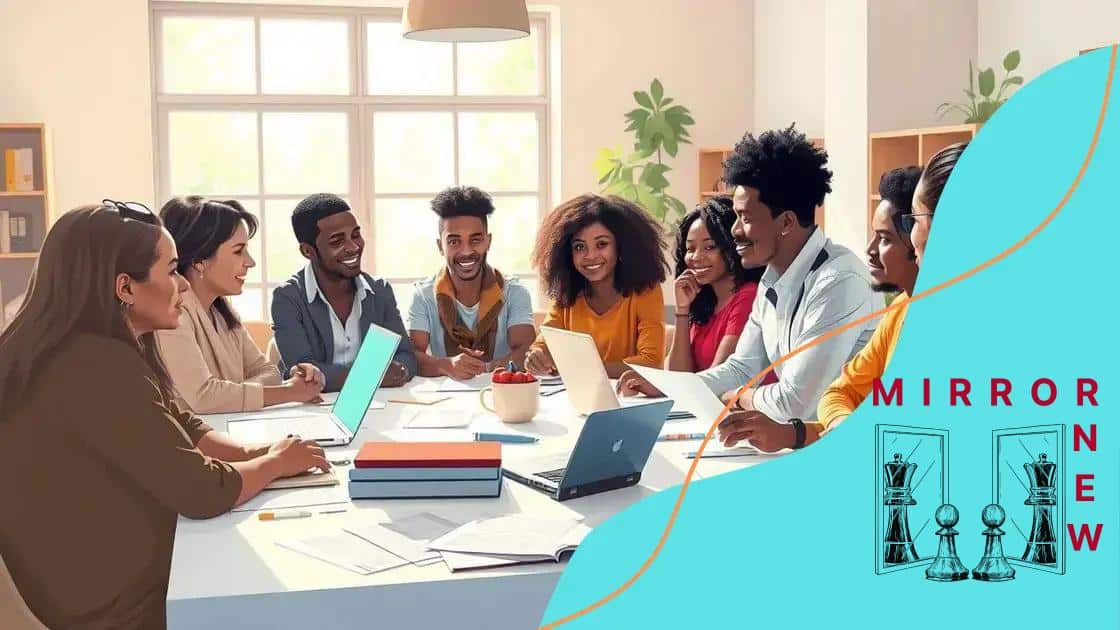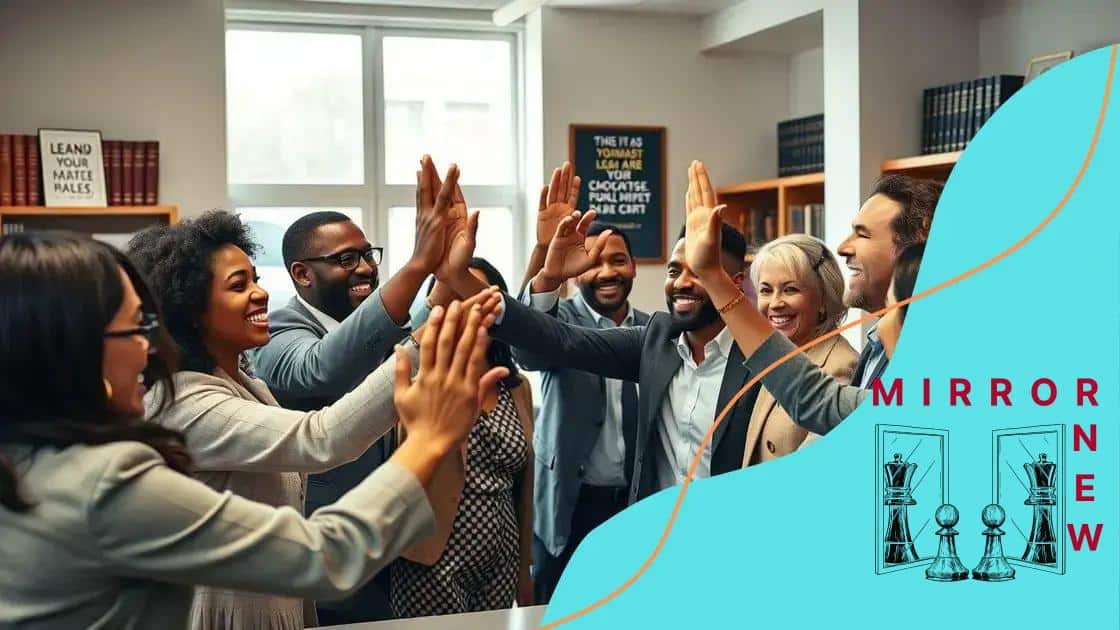Legal aid access for underserved communities is essential

Legal aid access for underserved communities is crucial for ensuring individuals receive necessary legal assistance, overcoming barriers such as financial limitations and lack of awareness through community involvement and technological advancements.
Legal aid access for underserved communities is vital in ensuring that everyone can navigate the legal system. Have you ever considered how many lives depend on this support to achieve justice? Let’s explore its significance.
Understanding legal aid and its importance
Understanding legal aid is crucial for ensuring that all individuals have access to justice. It provides vital support to those who may not afford legal representation, especially in underserved communities. This aid not only helps individuals navigate complex legal systems but also empowers them to advocate for their rights.
Legal aid encompasses various services, from legal advice to full representation in court. It’s important to recognize the role that legal aid plays in promoting equality and justice for all. Without it, many may remain voiceless in the face of legal challenges.
The Key Benefits of Legal Aid
Legal aid offers numerous benefits that can significantly impact individuals and communities. Here are a few:
- Access to Justice: Legal aid ensures that everyone, regardless of income, can access legal representation.
- Empowerment: Individuals become more informed about their rights and the legal process, boosting their confidence.
- Social Justice: Legal aid addresses systemic inequalities, helping to level the playing field in legal matters.
Additionally, legal aid supports public interest cases that may not be financially lucrative but are essential for fostering societal change. For instance, cases involving housing rights or discrimination often rely on legal aid organizations to fight for justice.
The impact of legal aid is seen not just in individual cases but also in broader societal outcomes. When communities gain access to legal resources, they become more resilient. They can better advocate for their needs and rights, ultimately leading to stronger, more equitable societies.
Who Benefits from Legal Aid?
Many individuals stand to benefit from legal aid. It primarily serves those who are low-income or marginalized. Families facing eviction, individuals navigating custody disputes, or victims of domestic violence can all find essential support through legal aid services. This safety net is vital for those who would otherwise have no means to address their legal challenges.
Moreover, legal aid organizations often work on community education initiatives. These programs inform people about their legal rights and the resources available to them, further enhancing the overall understanding of the legal system.
Barriers to accessing legal aid
Barriers to accessing legal aid can prevent many individuals from receiving the support they need. These obstacles can vary but often include factors like low awareness, financial limitations, and systemic issues. Understanding these barriers is essential for improving access to justice.
Many people simply do not know that legal aid exists or how to seek it. This lack of information can keep those in need from reaching out for help. Additionally, the application processes for legal aid can be complicated and intimidating, discouraging potential clients from pursuing assistance.
Common Barriers
There are several common barriers that hinder access to legal aid, including:
- Financial Limitations: Many legal aid programs have income restrictions that can exclude those on the brink of eligibility.
- Geographic Limitations: Some areas lack legal aid providers, making it difficult for individuals in rural regions to find help.
- Cultural and Language Barriers: Individuals from diverse backgrounds may face challenges in understanding services due to language differences or cultural misunderstandings.
- Complex Eligibility Requirements: The documentation and criteria needed to qualify for legal aid can be confusing and overwhelming.
Moreover, legal aid organizations often rely on limited funding, which can restrict the number of cases they can take on. This scarcity of resources can lead to longer wait times for clients, further complicating their access to justice. For example, someone facing eviction might face a lengthy delay in receiving legal assistance, which could exacerbate their situation.
Community awareness programs are vital in combating these barriers. By educating people about their rights and the services available, communities can improve access to legal aid. Events such as workshops or informational sessions can empower individuals to seek help when needed.
Success stories of legal aid in action

Success stories of legal aid highlight the profound impact that legal assistance can have on individuals and communities. These narratives not only inspire hope but also demonstrate the importance of accessible legal services in achieving justice.
One of the remarkable success stories involves a single mother facing eviction due to her landlord’s negligence. With the help of a legal aid attorney, she was able to assert her rights and negotiate with the landlord, ensuring she and her children had a safe place to live. This case illustrates how legal aid can change lives by empowering individuals to stand up against unfair treatment.
Community Impact of Legal Aid
The influence of legal aid reaches beyond individual cases. It strengthens communities by addressing systemic issues. For example, a group of low-income families united to challenge a local housing authority’s discriminatory practices. Thanks to the guidance of a legal aid organization, they won their case, changing policies that benefited many others.
- Empowerment: Legal aid helps people understand their rights and empowers them to advocate for themselves.
- Community Advocacy: Success stories often involve collective action, fostering a sense of solidarity and strength among community members.
- Policy Changes: Legal aid can lead to significant reforms that benefit entire communities, ensuring fair treatment for all.
Another compelling example showcases an immigrant who faced deportation. Through the assistance of legal aid, she was able to present her case effectively and ultimately secure her right to remain in the country. Her story underscores the critical role legal aid plays in protecting vulnerable populations and ensuring their access to justice.
These success stories illustrate that when individuals are given proper legal representation and advocacy, it not only resolves their immediate issues but also paves the way for broader social change. Each victory acts as a beacon of hope, encouraging others to seek the support they need.
Community involvement in legal aid services
Community involvement in legal aid services plays a vital role in promoting access to justice. When communities come together to support legal initiatives, they can create a more equitable society. Engaging locals fosters a sense of ownership and pride in the resources available for legal assistance.
Many legal aid organizations rely on volunteers and community members to provide essential services. This involvement includes not only legal professionals offering their time but also trained community members who help bridge gaps in understanding. They can assist with forms, provide translations, and share information about rights.
Benefits of Community Involvement
Participation in legal aid efforts brings several benefits to both the community and the legal system:
- Increased Awareness: When communities engage, it raises awareness about available legal services and resources.
- Enhanced Trust: Local involvement fosters trust between legal aid organizations and community members, promoting collaborative relationships.
- Better Representation: Community members often better understand local issues and can provide insights that improve the quality of legal assistance.
- Resource Sharing: By pooling resources, communities can create more robust support networks for those in need of legal help.
Additionally, outreach programs are essential in connecting underserved populations with legal aid. Workshops, information sessions, and discussions can help demystify the legal process for those unfamiliar with it. This kind of engagement not only informs individuals about their rights but also encourages them to seek legal help when necessary.
Collaboration between local businesses, schools, and legal aid organizations can further enhance community support. For example, a local high school might host a legal literacy event where students learn about their rights and responsibilities. This not only informs students but inspires a culture of advocacy within the community.
Future of legal aid accessibility
The future of legal aid accessibility looks promising as communities and organizations work together to enhance support for those in need. Changing technologies and increased awareness have created new opportunities to reach individuals who require assistance. As society evolves, so does the approach to delivering legal aid.
One significant trend is the integration of technology into the legal aid process. Many organizations are now using online platforms to provide legal advice remotely. This allows clients to access services from the comfort of their homes, breaking down geographic barriers that have traditionally limited access.
Emerging Trends in Legal Aid
Several trends are shaping the future of legal aid accessibility:
- Online Resources: Increasingly, legal aid organizations are offering websites full of guides and templates, making it easier for individuals to handle common legal issues themselves.
- Tele-Law Services: Many legal aid clinics are providing telephonic or video consultations, increasing convenience for clients.
- Community Partnerships: Collaboration between legal aid organizations and community groups is on the rise, leading to more effective outreach and service delivery.
- Advocacy for Policy Changes: Organizations are pushing for reforms to make legal aid more accessible, increasing funding and expanding eligibility criteria.
Additionally, educational initiatives are crucial for the future of legal aid. Programs aimed at informing the public about their rights and available legal services can greatly enhance access. For example, schools and community centers can play an essential role in delivering legal literacy workshops.
As we look ahead, it is essential for legal aid providers to remain adaptable. Ongoing assessments of community needs will be critical to ensure that services evolve with changing demographics and economic conditions. By focusing on continuous improvement and innovation, the future of legal aid accessibility can be bright.
FAQ – Frequently Asked Questions about Legal Aid Access
What is legal aid?
Legal aid is a service that provides free or low-cost legal assistance to individuals who cannot afford to pay for legal representation.
Who is eligible for legal aid?
Eligibility for legal aid typically depends on your income level and the type of legal issue you are facing. Many organizations have specific guidelines to determine eligibility.
How can I access legal aid services?
You can access legal aid services by contacting local legal aid organizations, visiting their websites, or attending community outreach events where they provide information.
What are common barriers to accessing legal aid?
Common barriers include lack of awareness about available services, complicated application processes, and geographic limitations that make it difficult for some individuals to obtain help.





